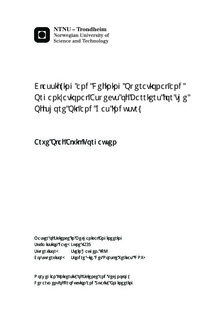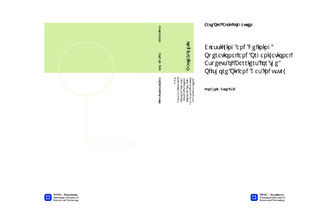| dc.description.abstract | This masters thesis is written on the topic of barrier management, and specifically the human and organizational aspects in this field. The main objective of the thesis is to clarify the use of terms related to human and organizational aspects of barrier management. The thesis is re- stricted to major accident risks in the offshore oil and gas industry.There have in the later years been an increasing focus on the operational and organizational aspects of risk reduction. In addition to this focus, the Petroleum Safety Authority in Norway have stated that barriers are one of their most important areas of focus. There are however a large number of different definition sets and classification schemes for barriers and risk reduc- ing measures, both within the oil and gas industry, and in other industries. These definitions and classifications integrate to a varying extent human and organizational aspects of the risk reducing measures. There is also difficulties incorporating the human and organizational contributions into accident scenario modeling, both because of the lack of data on these aspects and the lack of modeling methods that are adaptable for the oil and gas industry.Some of the main differentiation between the definitions that are described in the thesis is the differentiation between what aspects that are a part of the barrier, and what aspects that influences the barrier. Here there are some definitions that operates with a wide scope of what constitutes a barrier, where human actions, rules, regulations, procedures and plans can be con- sidered barrier elements, while other definitions strictly limits the scope of barriers to only con- sider technical and physical elements as barriers. There is also differences in the way the barrier definitions are broken down into sub-definitions. Some of the most common elements are bar- rier elements, barrier systems, barrier functions, and of course barrier. Some definition sets also include influencing factors. Though correlation exists between the different barrier definitions, there are some significant differences, especially on the operational and organizational aspects.Some modeling methods, that incorporates or focuses on human and organizational aspects have been described and discussed. The main focus is on Human Reliability Analysis methods. This is a set of methods that have been developed and used in the nuclear power industry to model human actions. These models differentiates between human actions, performance shaping, or influencing, factors, and uses probabilities to model human error or failure. These modeling methods have not previously been used, to any great extent in the oil and gas indus- try, because of the challenges of adapting the data and models to the operations performed on an oil rig, from the operations on nuclear power plants. The other modeling methods that have been described and discussed are the use of Bayesian Belief Networks, the Functional Resonance Modeling Method and the System-Theoretic Accident Model and Process methodology. All of these have pros and cons for application for barrier models in the offshore oil and gas industry.Some of the definitions that was found and discussed in the literature survey, are applied to different major accident related scenarios, to examine the differences between these closer, in case scenarios. The cases that are used, are in different parts of an accident scenario. The first case is an maintenance operation, where the different steps in the operation are described. The second case is in relation to a drilling operation. Here the different elements in kick-detection is described. The last case is a hydro carbon leak scenario, where different safety measures are described. For these three cases, four different definitions, or classifications of barriers were applied. The comparison showed that most of the differences between the definitions were related to operational and organizational aspects of the procedures and measures.The findings in the thesis points towards that to focus on the function of the barriers are the best way of incorporating operational and organizational aspects of barrier management into modeling. This is opposed to a hardware focused barrier definition. A set of barrier definitions that is based on this function-oriented view is proposed. Also a framework to identify barriers, based on the new set of barrier definition is proposed. The proposed definitions are applied to the same cases as the definitions found in the literature survey, and the barrier identification framework is exemplified through the application on a hydro carbon leak scenario.The findings and the proposed definition are discussed, and some areas that are in need of future work are proposed. | nb_NO |

